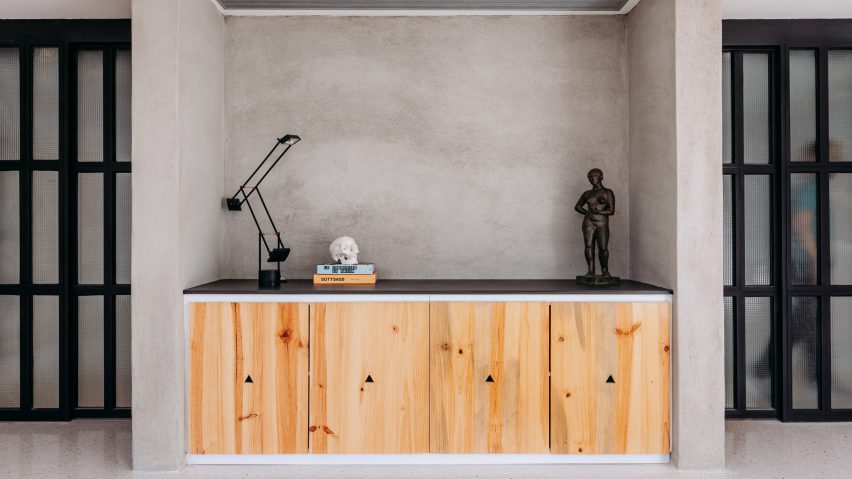
Atelier Caracas imbues apartment in Caracas with 1980s industrial edge
Interiors studio Atelier Caracas has brought industrial influences and offbeat materials into this apartment in Caracas, designed around the restrictions posed by Venezuela's recent political and economic crisis.
Set in the capital's Campo Alegre district, Apartamento N.1 belongs to a relative of Atelier Caracas co-founder Julio Kowalenko, who gave the studio a rare carte blanche for the renovation of the 400-square-metre interior.
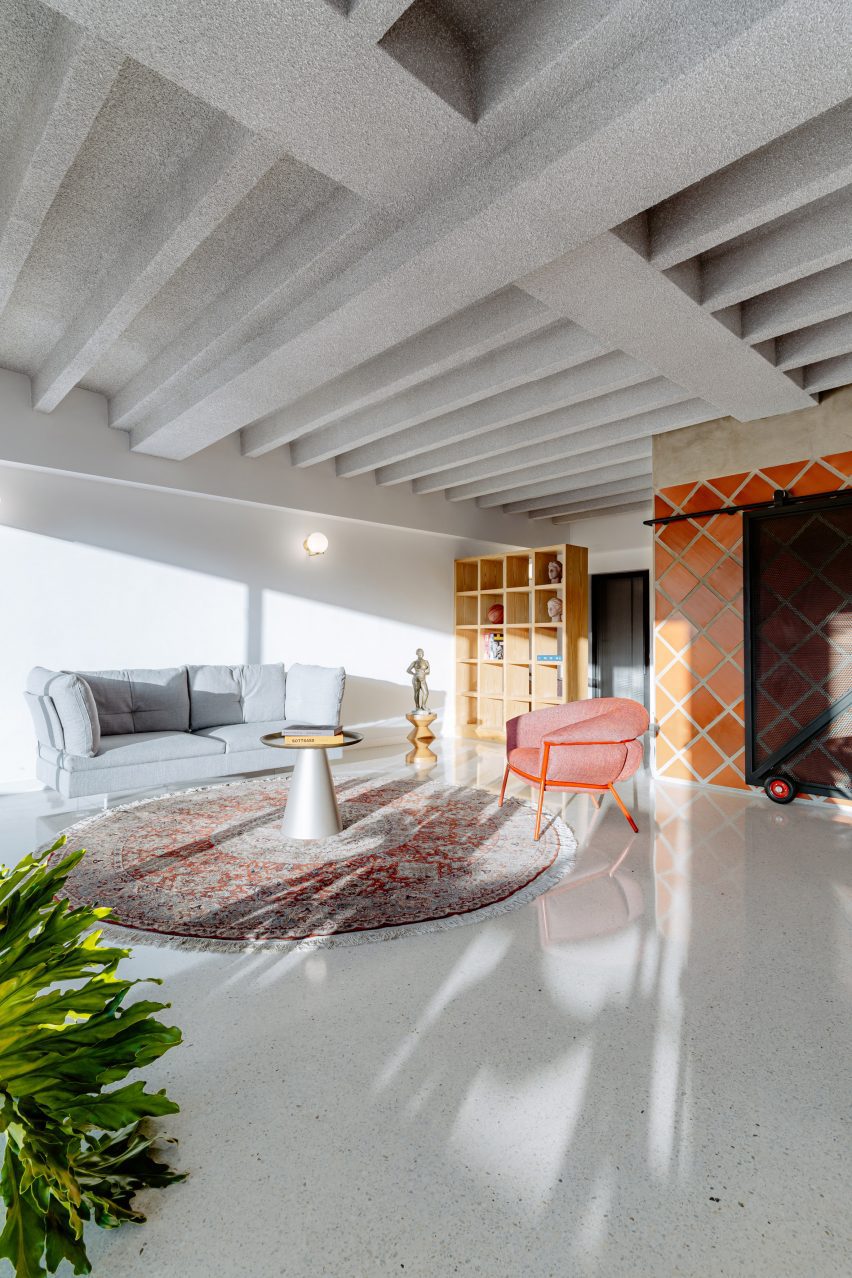
"He's a corporate, traditional Oxford type of guy," the duo explained.
"We said to ourselves, there are two ways in which we can approach this project," they added. "We could either play it safe or go nuts."
Ultimately, Kowalenko and his co-founder Rodrigo Armas used the opportunity to experiment with applying industrial design principles at an architectural scale and enhanced the apartment's loft-like qualities in a nod to the architecture of 1980s Los Angeles.
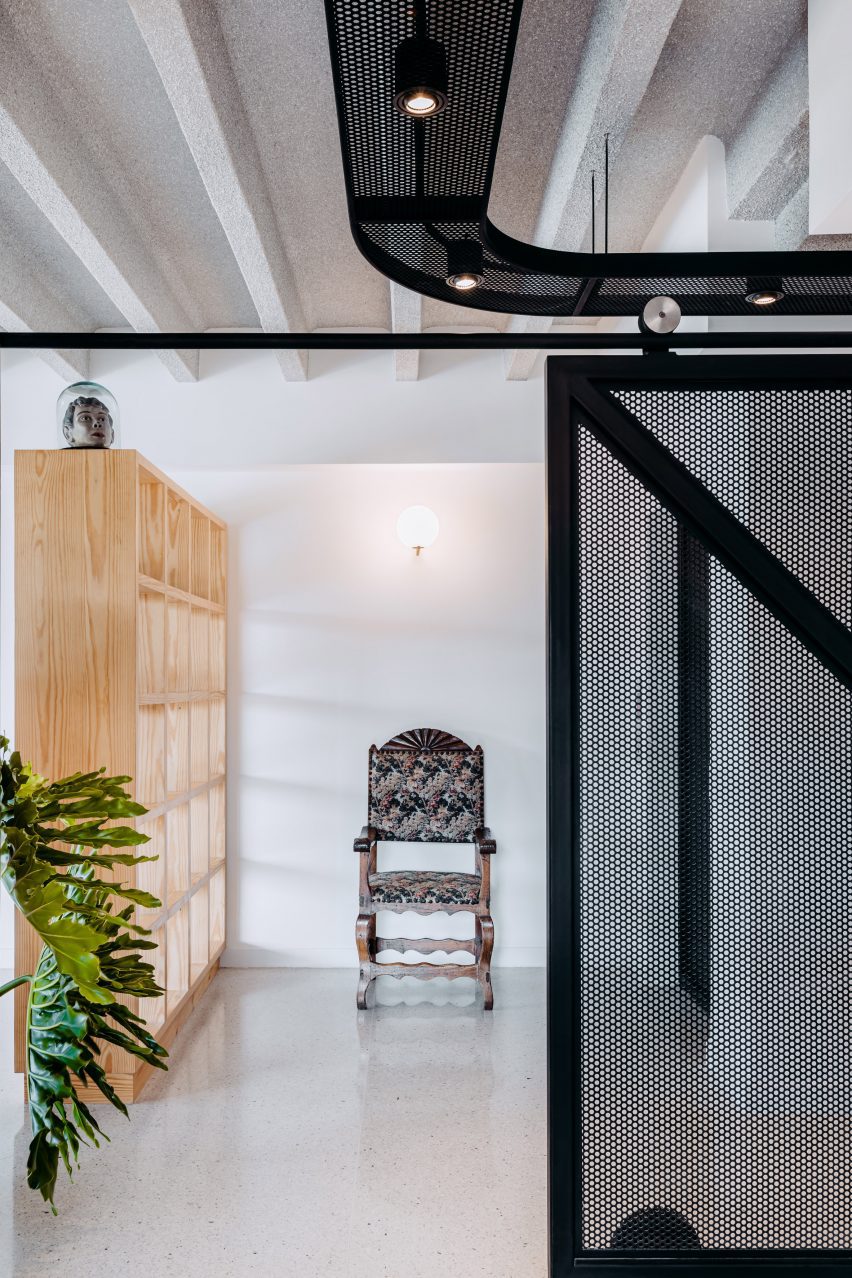
"We've always been fascinated with a sort of robotic, mechanical aesthetic that accompanies 80s LA architecture," the studio said.
"This popular mechanics approach, as we call it, can be seen in the early works of Frank Gehry and later on in the experimental houses and appendixes of Eric Owen Moss and Morphosis among others," the duo added.
"There is a finesse in this artisanal slash industrial approach, which we always like to pay homage to in our designs."
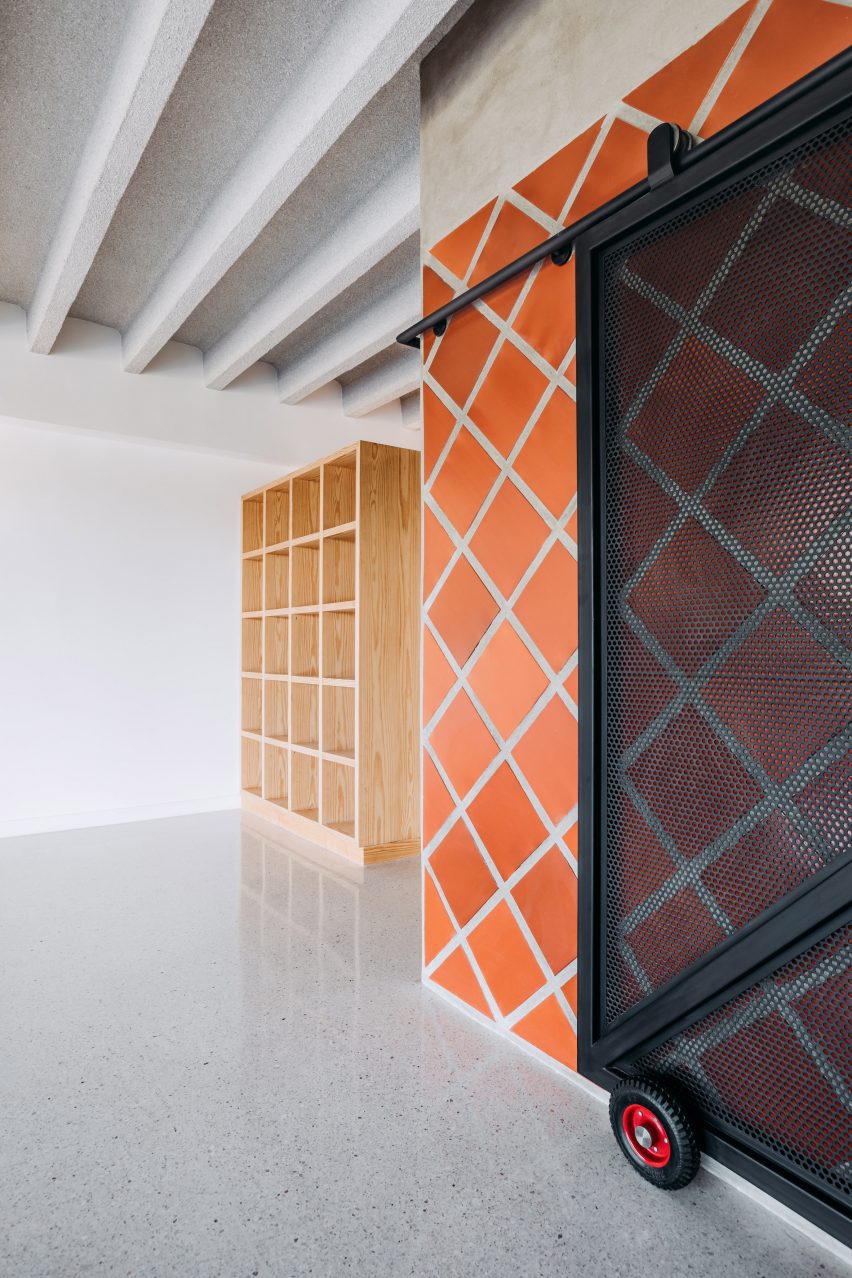
These influences are seen most clearly across the home's experimental material palette.
The studio decided to completely expose the raw concrete slab structure of the ceiling, celebrating it with a textural finish rather than hiding it away.
The duo avoided the use of pre-fabricated components, instead carefully designing the majority of the elements themselves.
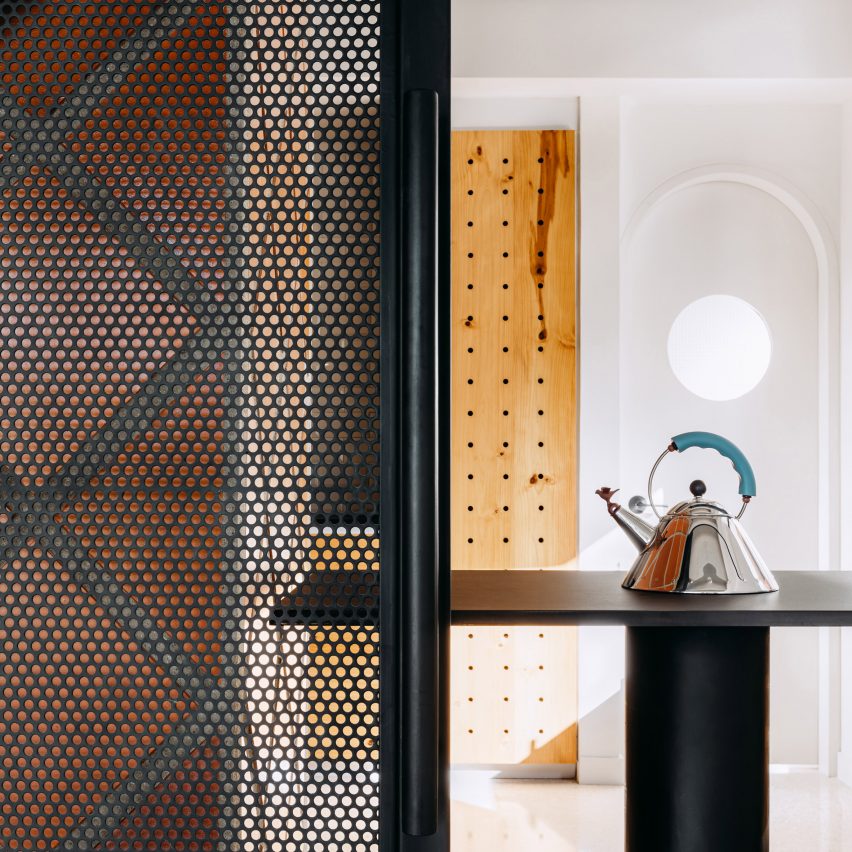
To preserve the integrity and simplicity of the ceiling, the lighting is mounted on a black-coated perforated metal structure – a reference to the 1980s aesthetic and custom-designed for this apartment by Atelier Caracas.
The studio also utilised the same perforated sheet metal to create a number of versatile room dividers that break up the largely open-plan space.
Set on wheels and attached to the ceiling via matching rails, they can be easily moved around to separate the kitchen from the living areas.
"Microperforated sheet seemed a clever option to generate both permeable and ephemeral separations between private and public spaces within the apartment," Atelier Caracas said.
The early stages of the apartment's design kicked off in 2017 when Venezuela faced intersecting economic and constitutional crises.
Inevitably, Atelier Caracas says this "difficult period of turmoil" also impacted the availability of materials.
"There was a scarcity, which in turn led the studio to a never-ending investigation on how what was available could be used differently," the duo said. "The main goal was to make high-end architecture with simpler materials."
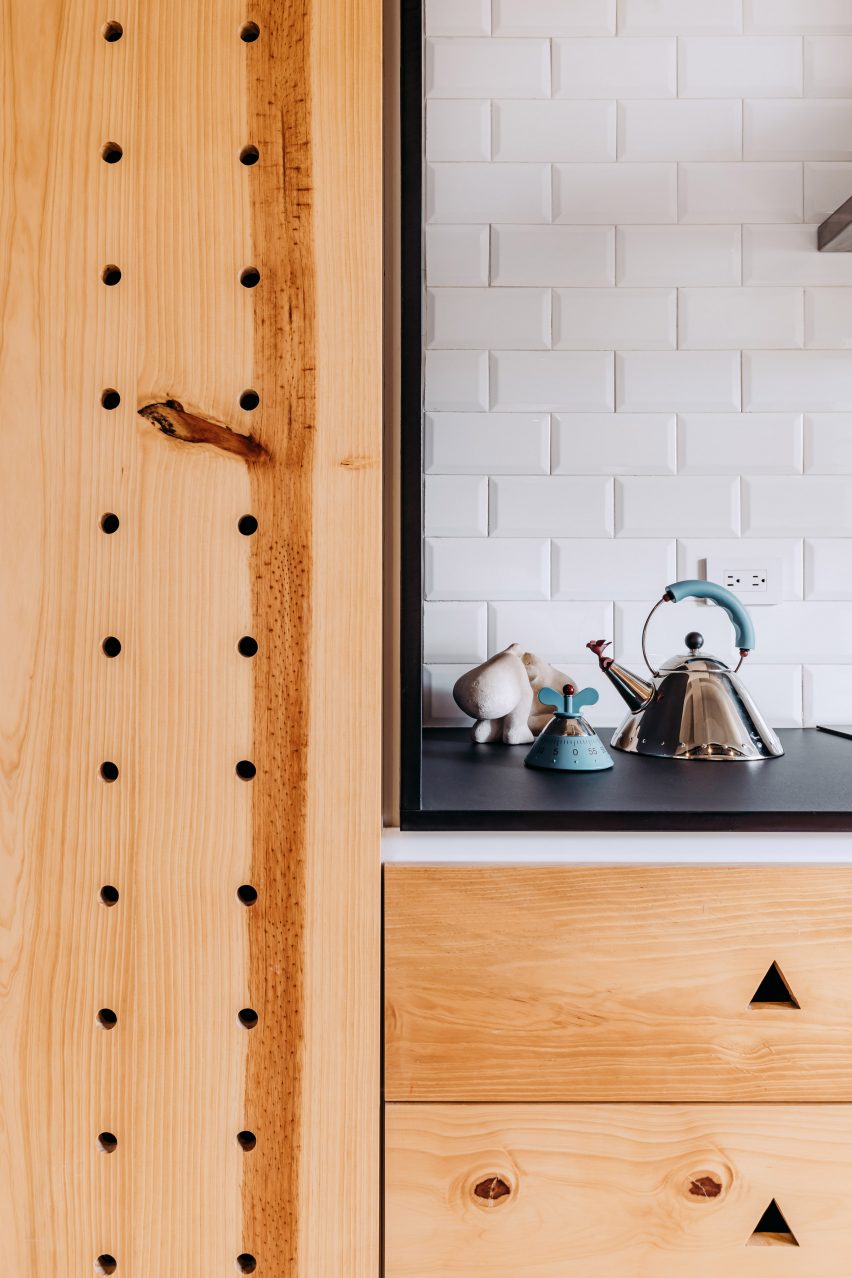
The simple white terrazzo floor – used almost everywhere across the apartment – was produced on-site and chosen for its cooling properties in the city's tropical climate.
"Even in high temperatures, it remains fresh and cooled," the studio said. "Also, the reflective quality of this material was a key factor for bathing the spaces with the natural sunlight coming from the windows."
The kitchen is fronted with unfinished wooden panels, decorated only with geometric cutouts that double up as door handles.
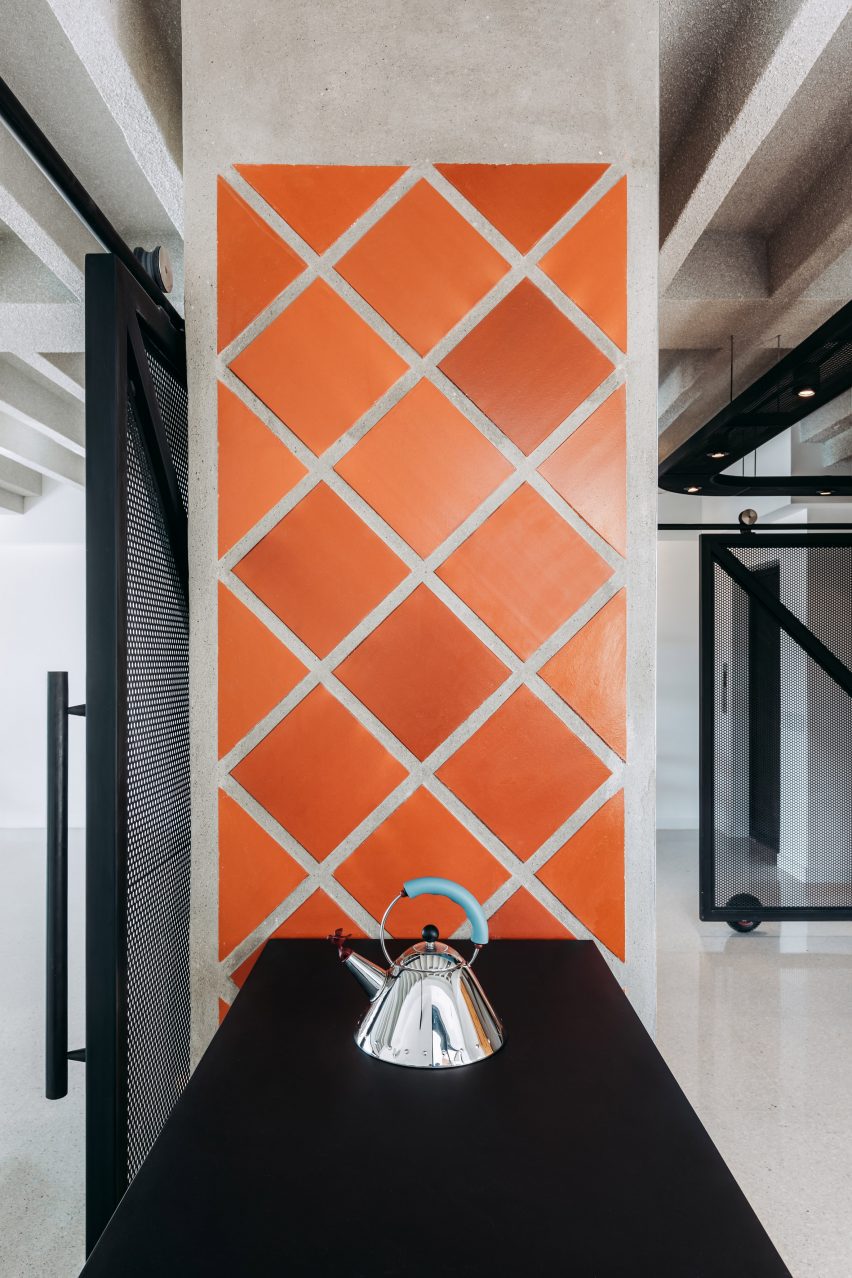
Meanwhile, the wall that borders the living room is finished in terracotta flooring tiles from a pool supply store.
"This type of terracotta is usually found on pool terraces and public areas of middle-class Venezuelan residences," Atelier Caracas explained. "Nowadays it's considered to be a kitsch or outdated material."
"Contrast between refined and low-tech materials can generate new narratives on what luxury can be. We believe that luxury lies in the way people inhabit their spaces, and not in the number of flamboyant finishes."
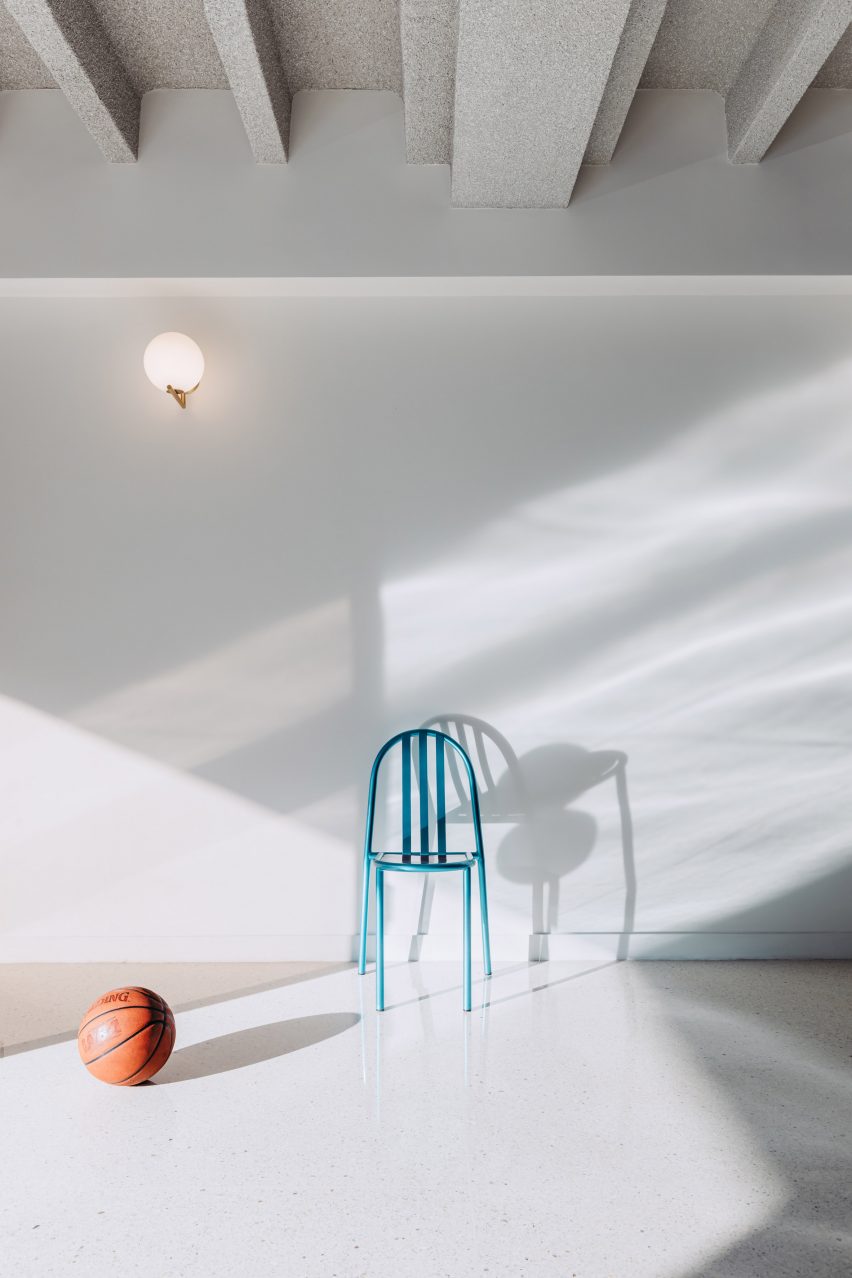
In terms of line and form, the apartment playfully mixes linear grids and diagonals with rounded corners and arches.
"Monotony and routine can, sometimes, cause a stagnant state of contentment that we like to disturb through our designs," the studio said.
"We like to think that architecture should be uncomfortable in some sort of way, by pushing people out of their comfort zone, one can really redefine humans' relation to design."
This same philosophy also inspired one of the studio's previous projects in Caracas – a day spa modelled on Stanley Kubrick's film 2001: A Space Odyssey.
The photography is by Outer Vision.